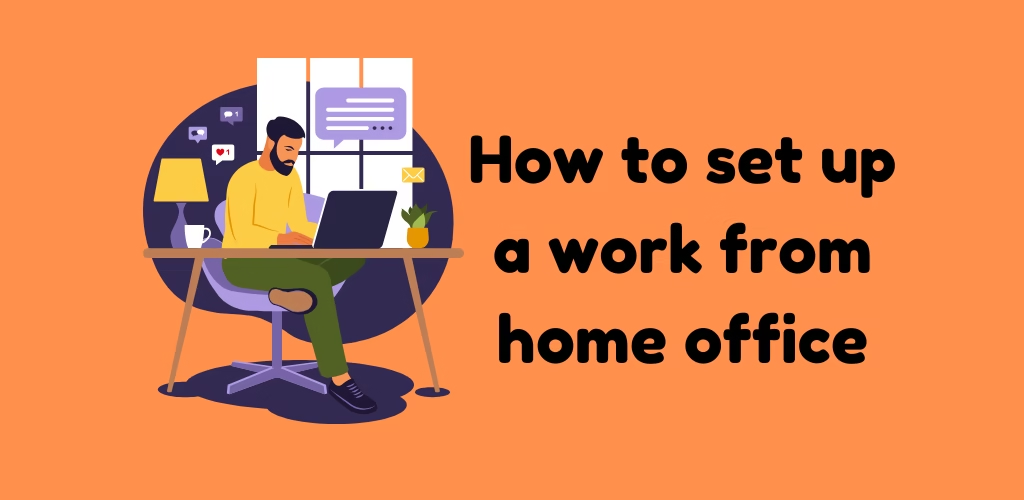
Working from home has become the new normal trend. If you are getting started with remote work or you have been in it for years, setting up a home office for remote work is very important. This ensures a better productivity and good physical and mental well-being. A well-designed workspace not only boosts your efficiency but also helps you maintain a healthy work-life balance.
How do you set up the perfect work from home office
Choose the right place or space.
The right place is very crucial when it comes to working from home. You need a space that is free from distractions and is comfortable. If your home has other occupants, working from the sitting area is not ideal. You need to find a space or a room that is free from noise, and distractions. This will help you focus on your work.
Choose a workspace with good lighting. Natural light is the best, if not accessible invest in a good desk lamp that is close to daylight.
Invest in the right furniture
You need to have the best furniture for your WFH office. Comfort is very crucial when it comes to working remotely. Invest in an ergonomic chair that is comfortable to work on. Make sure your back is well supported. It should have adjustable height and armrest.
Choose a desk that fits your workflow. It should have enough space for your computer, writing materials, and any other tools you regularly use. If space is tight, consider a corner desk or a wall-mounted desk.
Having storage options like filing cabinets or shelves can help keep your workspace organized. You can use these to store documents, office supplies, and personal items you don’t want cluttering your desk.
Make use of the right technology
- Computer: A fast, reliable computer is essential. Depending on your work, this could be a laptop or desktop. Ensure it has enough memory and processing power to handle your tasks.
- High-speed internet or WI-FI: A stable, reliable, and fast internet connection is non-negotiable for remote work. If your connection is spotty, consider upgrading your plan or investing in a Wi-Fi extender to improve coverage.
- External monitor: If you work with multiple tabs or need more screen real estate, an external monitor can be a game-changer. It helps increase productivity by allowing you to multitask more efficiently.
- Keyboard and mouse: Don’t underestimate the power of a good keyboard and mouse. Choose ergonomic options that reduce strain during long work sessions.
Organize your workspace
A tidy and organized workspace can help clear your mind and improve focus. How do you keep your home office organized?
- Cable management: Use cable organizers or clips to keep wires from tangling. A clean desk with minimal cables creates a more pleasant work environment.
- Desk accessories: Organize your desk with trays, organizers, or file holders for easy access to documents and supplies. A clutter-free space is less distracting and makes it easier to find what you need.
- Personal touches: Add items that inspire you but don’t overwhelm the space. Plants, artwork, or motivational quotes can make your workspace more inviting.
Create a conducive atmosphere
The right ambiance can boost your focus and productivity. Here’s how to set the mood:
- Noise control: If you work in a noisy environment, consider noise-canceling headphones or a white noise machine to block out distractions.
- Music or silence: Some people work better with background music, while others prefer silence. Figure out what works best for you—whether it’s instrumental music, nature sounds, or complete quiet.
- Temperature control: Make sure the room temperature is comfortable. If you’re prone to getting cold, consider a space heater. If it’s too warm, a fan can keep you cool and focused.
Set clear boundaries
A key aspect of working from home is knowing when to stop working. Create boundaries to prevent burnout:
- Work hours: Set specific work hours and communicate them with family or roommates. This will help you maintain a work-life balance.
- Designate breaks: Incorporate regular breaks throughout the day. Short breaks help improve focus and reduce fatigue.
- End-of-day routine: Have a routine for winding down at the end of the workday, whether it’s shutting off your computer, organizing your desk, or taking a walk. This signals the end of the workday and helps separate your home life from your professional life.
Setting up a home office isn’t just about having a desk and chair. It’s about creating an environment that fosters productivity, comfort, and work-life balance. With the right space, furniture, technology, and mindset, you can make your home office a place where you can thrive in your remote career.

